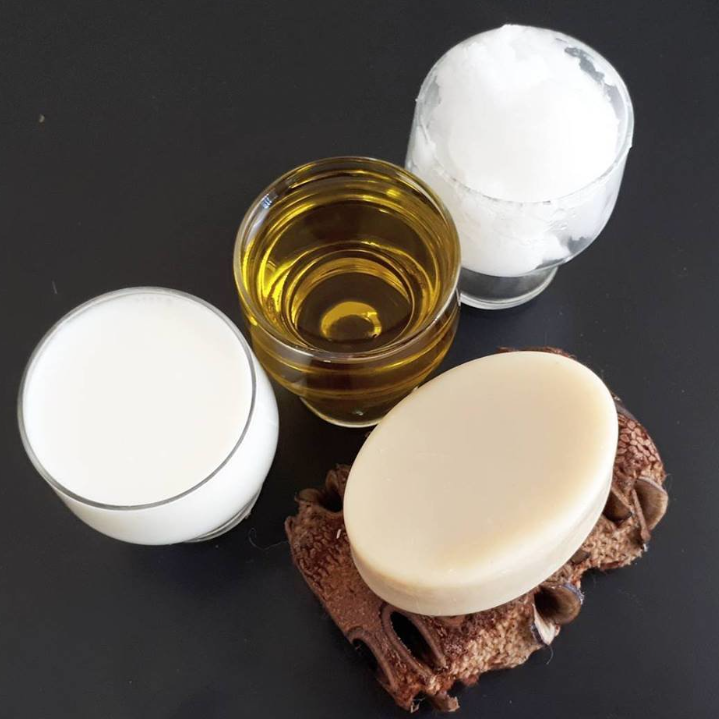There is a lot of marketing froth and bubble associated with "Shampoo bars" otherwise called soap.
Fatty Acids
All natural soaps contain a range of fatty acids which determine the properties of the soap. A good soap balances 6 or 7 of these fatty acids.
Using just coconut and Olive oil you can get all the properties you need, all the expensive, fashionable and exotic extras like hemp, argan and babassu add price, but no real benefits.
Coconut oil
Lauric acid: 48%,
Linoleic acid: 2%,
Oleic acid: 8%,
Palmitic acid: 9%,
Stearic acid: 3%,
Myristic acid: 19%
Olive Oil
linoleic 10%
linolenic 1%
Oleic 72%
Palmitic 11%
stearic 4%
The exception is castor oil which is the only realistic source of Ricinoleic acid, but its properties can be found in other fatty acids.
Saturated oils
like Coconut Oil and Palm Oil, are solid at room temperature and contain Lauric Acid, Myristic Acid, Palmitic Acid and Stearic Acid. They make a harder and higher-lather cleansing soap bar.
Unsaturated oils
like Olive Oil and Sunflower Oil, are liquid at room temperature and contain mainly Oleic and Linoleic Acid which contribute to a softer finished product.
Saponification
The reaction from mixing these oils with an alkaline base - Sodium Hydroxide (NaOH) for bars or Potassium Hydroxide (KOH) for liquid soaps.
Coconut Oil is very similar to Palm Oil, high in Lauric Acid, Myristic Acid, Palmitic Acid and Oleic Acid, and has an almost perfect range and balance of fatty acids for a good lathering - but slightly drying soap. I add Olive oil and goatsmilk for moisturising.
When saponified, Coconut Oil produces ‘Sodium Cocoate’, or ‘Potassium Cocoate’ depending on whether it is reacted with Sodium Hydroxide (NaOH) or Potassium Hydroxide (KOH).
Fatty Acid Properties
The properties of the 8 fatty acids* and optimum quantities of each to create a balanced soap...
* Lauric acid contributes hardness, cleansing, and big fluffy lather, 14% - 17%
* Myristic is another saturated fatty acid that contributes hardness, cleansing, and fluffy lather: 4% - 7%
* Palmitic acid contributes hardness and stable creamy lather 8%-12%
* Stearic acid that contributes hardness and stable lather is an alternative to palmitic acid, it has a longer carbon chain, comes from Shea Butter or Soy Wax 3%-8%
* Oleic is an unsaturated fatty acid that contributes to the conditioning/moisturizing abilities of a soap. Many oils contain more oleic acid than olive oil, including Sunflower, Safflower, and Canola oils 30% - 34%
* Linoleic is an unsaturated fatty acid that contributes to the conditioning/moisturizing levels, the main contributor to the silkiness of the lather Luxury oils like Evening Primrose, Passion Fruit, Watermelon, Wheat Germ, and Hemp oils are high in linoleic acid 10% and 14%
* Linolenic is an unsaturated fatty acid that contributes to the conditioning/moisturizing levels, and is typically very low in soap formulas. 0.5% -1%
* Ricinoleic is an unsaturated fatty acid that contributes to the conditioning/moisturizing levels, and the stability of lather, only in castor oil.

